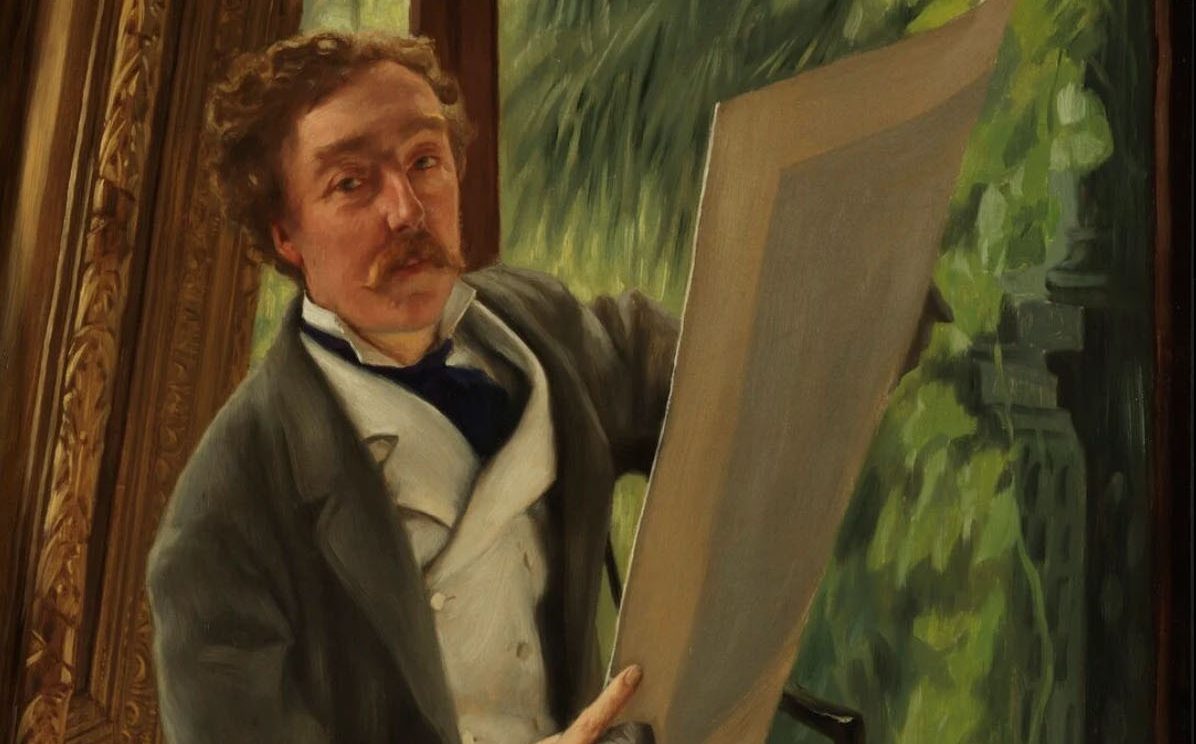
NATIONAL PORTRAIT GALLERY WRONGLY CLAIMS ART DEALER BUILT CAREER USING SLAVERY MONEY
The National Portrait Gallery is under fire after wrongly claiming that an art dealer built his career using money from slavery.
The London gallery claimed next to a portrait of Edward Fox White that a compensation payout his father-in-law received for freeing slaves was used to “establish and sustain” his career.
However, curators have been forced to admit there is “no evidence” for the link after it was spotted by Donald Gajadhar, Mr White’s great-great-grandson.
They have now removed any mention of slavery from the caption, but Mr Gajadhar is asking for a public retraction of the slur on his ancestor.
“The claim simply isn’t true,” he told The Telegraph. “They had no evidence that his father-in-law, Moses Gomes Silva, gave him any money from his slave compensation.
“It seems to me that it was put there to tick some boxes, but that’s not right, they should have done their due diligence.
“It made me feel that they are sloppy, that they have an agenda which is more important to them than the facts.
“I want them to issue a public retraction and to apologise. I want them to tell the truth and to do their job properly.”
The oil painting, by French artist James Tissot, was sold by Mr Gajadhar’s grandmother to Christie’s in 1988 and is currently on loan to the National Portrait Gallery.
Mr Gajadhar, who runs Fox-White and Associates, an art appraisal company founded by Mr White, noticed the caption when he visited the gallery last summer.
It read: “White’s first marriage linked him to a wealthy Sephardic Portuguese Jewish family who had owned Jamaican sugar plantations.
“Following Abolition in 1836, White’s future father-in-law received a ‘large amount’ of compensation for 28 enslaved Africans – money that would later help establish and sustain White’s career.”
In a letter to The Telegraph, Mr Gajadhar said the claim “did not align with my knowledge of our family history, which revealed no such transaction”.
He added: “[As] a descendant of slaves myself, I felt compelled to seek clarification”, and said he wrote to the gallery in December asking staff to provide the source of their claims.
‘Exploring diverse narratives’
Mr Gajadhar, who is of English, West Indian and Indian descent, noted that, as the firm he runs from New York is now “black owned”, it is “not good to claim it is founded on the backs of slavery compensation”.
The gallery told him that staff had committed to “exploring multiple and diverse narratives of British history” including “stories of empire and colonialism, which are woven through the interpretation at the National Portrait Gallery to provide global context to the people and portraits on display, and to explore their legacies”.
It admitted that “while it is not easily demonstrable (and not having access to the relevant historic accounts) that there is a direct link” between the compensation Mr Gomes Silva received for freeing enslaved Africans and the inheritance he later left for his daughter, there was “nevertheless a possibility” that she and her husband may have benefitted from the money.
The gallery did not reveal the source of its claim.
However, the caption was then updated to remove the inaccurate statement that Mr Gomes Silva was Portuguese. It was also tweaked to reduce the number of slaves he sold to 20, along with a note to say it was “not clear” whether Mr White received any money from the slavery transaction.
A freedom of information request subsequently revealed that the gallery was basing its claim on research done by Mr Gajadhar’s own family.
It showed that in 1836, Mr Silva received £367 compensation for 20 enslaved Africans – approximately £50,000 in today’s money – which it is believed he used to relocate his family from Jamaica to the UK.
When he died 22 years later, his daughter Julia inherited a portion of his estate. Mr White had established his business as an art dealer several years before his father-in-law’s death.
The family’s research made no mention of the slavery compensation financing that business or their lives.
‘Insufficient direct evidence’
Mr Gajadhar told the gallery: “I understand, more than most, that confronting painful legacies is necessary, however such efforts cannot come at the expense of individual truth.
“Edward Fox White deserves more than to be cast as a beneficiary of a system he demonstrably did not profit from.
“Instead, his portrait should stand as a testament to his own talent and dedication, his contribution to the art world built on his own merit, not the sins of others.”
The gallery admitted in response that there was “insufficient direct evidence” to support the claim and said curators would remove it “at the earliest opportunity”.
The third iteration of the caption now on display makes no mention of slavery but the gallery has not responded to Mr Gajadhar’s calls for a public retraction.
A spokesman for the gallery said: “Having listened to Mr Gajadhar’s concerns, the gallery accepted that there was insufficient direct evidence to show that compensation money received by his father-in-law benefitted White’s financial situation and business.
“Following the correspondence with Mr Gajadhar, we have amended the label, which is on public view next to the portrait.
“We have thanked him for his feedback and would be very happy to continue to discuss the matter with Mr Gajadhar, if there are further areas of concern.”
2024-04-15T17:45:32Z dg43tfdfdgfd